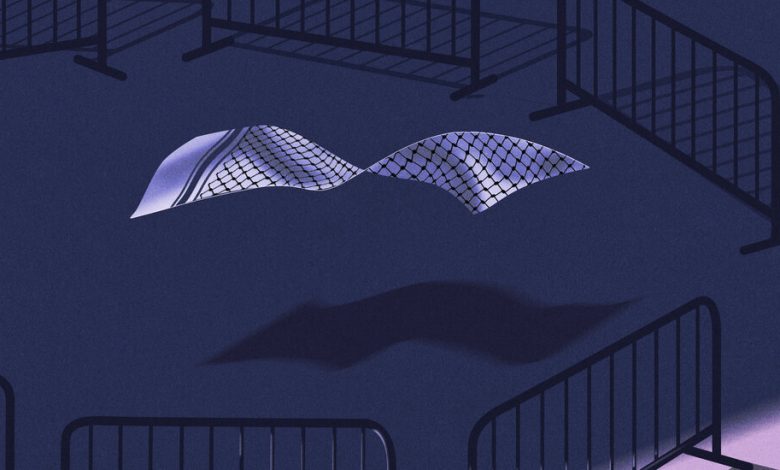The Campus Protests Signal the End of an Era for the Democrats

The colleges had a choice; in most places, they chose to escalate.
At Indiana University, a police sniper was stationed on the roof of a building; at the University of Virginia, they dispersed protesters with pepper spray; at U.C.L.A., it was with rubber bullets; at the University of Texas, Austin, they arrested dozens of students on pretexts so flimsy that the local district attorney threw out all the charges within 48 hours, and then they returned for a second round of arrests a week later.
The two mass arrests at Columbia bookended the rapid escalation: When New York City police officers swarmed the green on April 18, there were hardly any similar encampments anywhere else in the country, and it would have been reasonable to think that campus unrest had peaked back in the fall, but by April 30, when the nation’s largest police force entered occupied Hamilton Hall, something like a national protest movement had sprung up in just two weeks. By May 2, according to The Appeal, a nonprofit criminal-justice news site, there were at least 100 encampments in nearly 40 states, and more than 2,000 protesters had been arrested. In proudly defending the mass arrests in New York, Mayor Eric Adams did not focus on trespassing or the disruption to campus life. What he emphasized instead was the urgent need to literally police an ideological threat. “These are our children,” he said, “and we can’t allow them to be radicalized.”
Almost as soon as the horrifying news of Hamas’s Oct. 7 attacks reached the United States, the country, and especially its media, treated college campuses as a significant front of the brutal war it initiated. This attitude is several kinds of narcissistic, but in its way it is also only natural: Campus conflicts are both more proximate and more personal than the war itself for many Americans; the initial Hamas attack was gruesome, and the Israeli response has been extreme, intensifying the always fraught domestic politics of the United States’ relationship with Israel, and the spectacle of college protests, which inevitably mix political fervor with adolescent grandiosity and hints of potential generational change, seems almost designed to generate discourse about kids these days.
But what has transpired in the aftermath of the first crackdowns on campuses — as protests and counterprotests have grown more intense, with some universities seeking to negotiate with increasingly militant student leaders but most calling the cops instead — is also not just a story about the war in Gaza or a new generational divide. It is also a case study in the dynamics of escalation, and I’d like to emphasize three stories, each related, that may help explain the pattern.
The first is the militarization of American police forces and the rise of what Radley Balko has called the “warrior cop,” especially after Sept. 11 — a period in which, it is important to remember, the United States has gotten vastly safer but during which law enforcement has nevertheless gotten far more martial, in its weaponry and gear, its tactics and training and its outward-facing “thin blue line” language, as well.
The second is the recent turn against all forms of protest, by law enforcement and the public, in the aftermath of the mass climate change marches of 2019 and the Black Lives Matter movement of 2020. Over the past five years, significant legal restrictions on protest have been turned into law globally. Nearly half of American states have also imposed limits; several states have even passed bills granting immunity to drivers who run over protesters, and New York Democrats have proposed a law that would define road-blocking protests as “domestic terrorism.”
